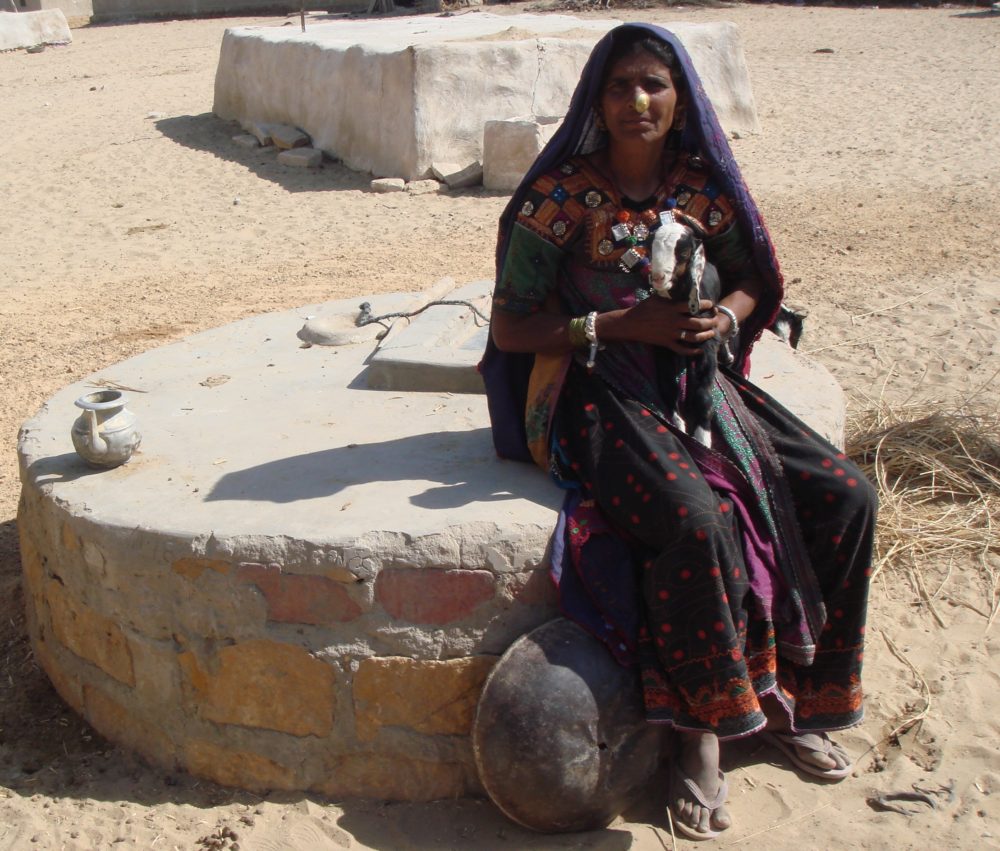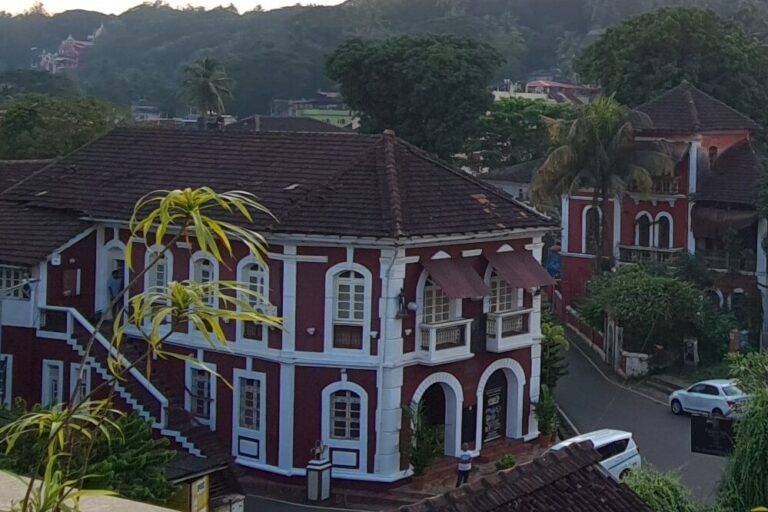By Neena Bhandari
Mohangarh, (Jaisalmer District, Rajasthan, India), 29.03.2012 (The Hindu Businessline): Not long ago, the remote communities in Jaisalmer district eked out a living from a single annual crop of millet (bajra), dependent on the mercy of rain gods. The 48 degree centigrade heat of the harsh summer sun, frequent sandstorms and no water posed a major challenge for survival. Droughts and the spectre of camel and livestock bones strewn on the sand dunes was a common phenomenon. But the advent of the Indira Gandhi Canal Project (IGNP) in the mid-1980s transformed the landscape and its inhabitants.
Assured availability of water for drinking and irrigation turned the once barren fields of north-western Rajasthan into fertile farms, yielding two crops a year. “Now we harvest wheat, cluster beans (Guar), mustard, groundnut, cumin and gram,” says Hasam Khan, Sarpanch of Hamir Nada ki Dhani in Mohangarh panchayat, 75km from Jaisalmer.
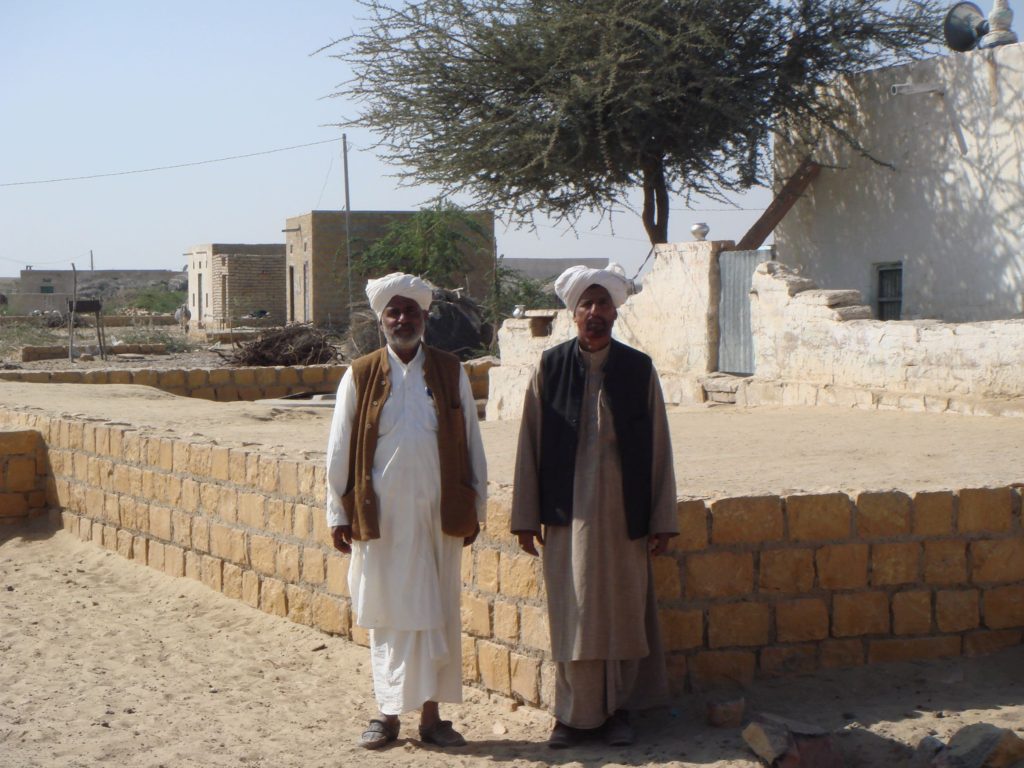
In these far-flung dhanis (hamlets), farming has become the main occupation and source of income. Earlier, the locals would have to migrate to other states in search of work and return home after months of toil to precious little. But today, the local villagers employ farm labour from other parts of Rajasthan, Haryana and Punjab.
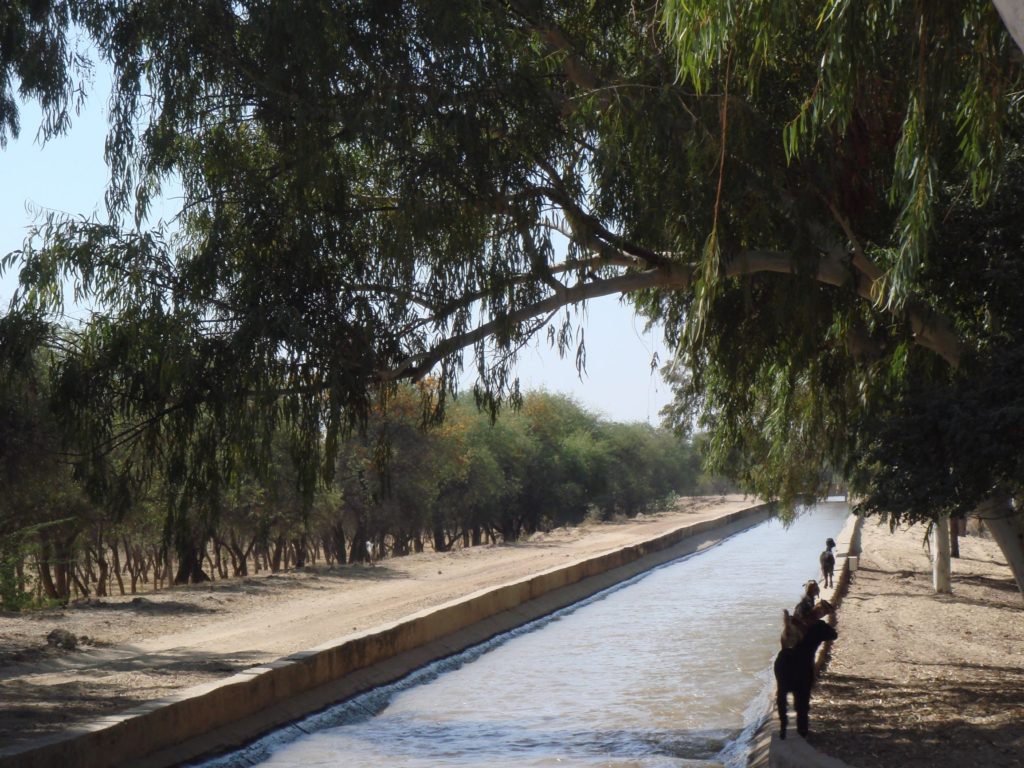
“With consistently good returns from the harvest, we are able to hire workers who are paid one-third from the profit earned. Our people are learning farming skills only now as for generations, they have only practiced animal husbandry”, says the Sarpanch.
In this dhani, irrigated fields have certainly reaped rich dividends. It is evident in the improved living standard of the community. Most of the houses are made of baked bricks, with TV antennas and satellite dishes adorning the roofs. For once, food is aplenty.
As Aladini Sanwera, who used to work in the mines and earn barely enough for two basic meals a day says, “With water available for irrigation, our 75 bigha farm has delivered bumper crops in recent years. We have more than enough food for my six married children and their families”.
Aladini grows wheat, which fetches about Rs1500 a quintal, channa and mustard are sold at Rs 4000 and Rs 3000 a quintal. She also owns four cows and 15 goats and makes ghee (clarified butter), which is sold at Rs 400 a kg. “Last year, we made a saving of Rs 20,000,” the 50-year-old says with a sense of pride, adjusting her spinning-top shaped gold nose stud.

Around the corner, children playing in the sand look well-fed too. As Meema Sanwera, 25-year-old mother of a son (7years) and a daughter (2 years) says, “Since we started receiving water from the canal for irrigation, most homes can afford to cook green vegetables, markedly absent in our diet earlier. Families now have the money to buy seasonal fruits like banana, oranges and papaya”. She has a Master’s degree in Sociology from Jaisalmer University and has put her education to good use by working as an Anganwadi worker in the dhani.
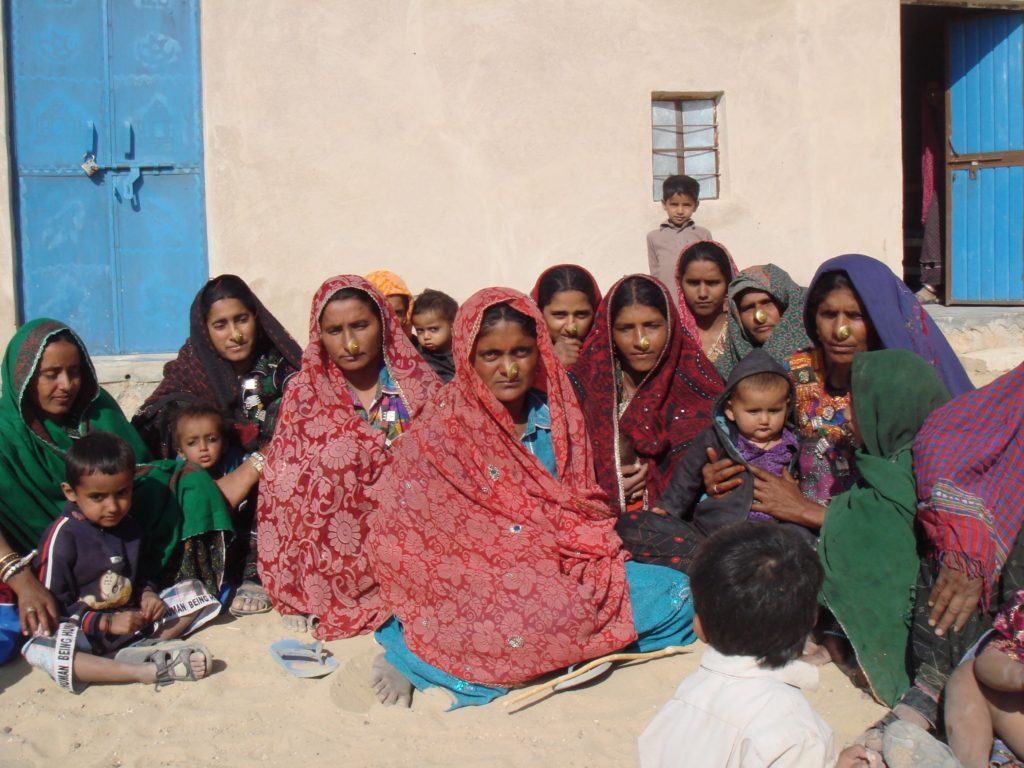
At the local Anganwadi centre, the attendance ranges between 40 and 70 children daily. With livelihood assured, people are making education a priority too. It is the first generation attending formal school.
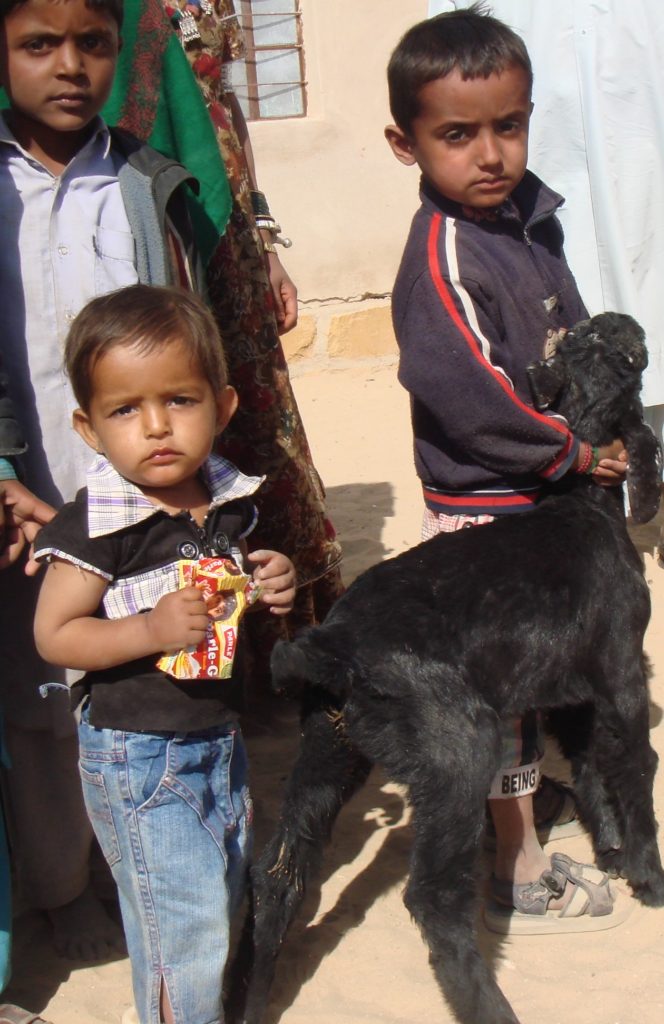
Durga Kanwar, 30, has three boys studying in Mohangarh village, about 10 km from the dhani. Hers is one of the only eight Rajput homes in Hamir Nada. Her father-in-law owns 10 bigha land divided amongst her husband and his four brothers. The couple also has three cows, which yield five litres of milk each per day. After feeding the boys, she sells the remaining milk to other villagers at Rs 14 a litre.

But the canal water has not been a magic bullet for relieving every one’s misery. Alarakhi Sanwera, 30, who has six children below 10 years of age, can only afford two meals comprising bajre ki roti (millet flat bread) and one seasonal vegetable. She says, “The canal water has not really benefitted families like ours, who have no land”.
The villagers say only 30 per cent of the land is owned by the local community. The rest was bought over by the urban folk, who had the money to invest when the canal water began flowing to their dhani. “There was a scramble to buy land and while the affluent city folk capitalized on the opportunity, the locals could ill afford to have a stake in it”, says Khani Sanwera, 27, mother of four kids, visibly unhappy with the outcome.
However, Khani’s family does have 25 bigha farmland and has had a good harvest of cluster beans last year, which sold for up to Rs 120 a kg. She also has two cows and two goats. The indigenous sewan grass has been providing nutritive fodder for the cattle in the Thar desert. Next to the houses are cows having an afternoon siesta while camels crane their necks to forage on the leaves of the local Khejari (Prosopis cineraria) trees.
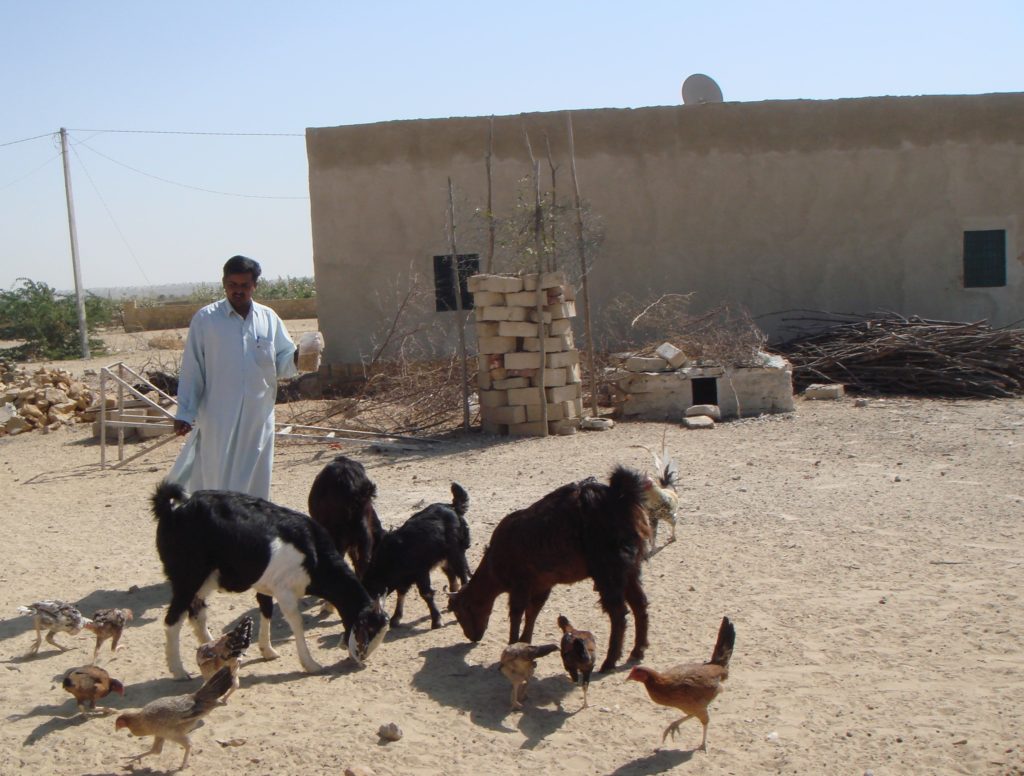
Goats and 25 chicks are running amok in Akbar Ali’s mud polished backyard. He makes a living from selling eggs at Rs 10 each and chicken for between Rs 200 and Rs 300 in the Mohangarh village market. Most of the people this correspondent spoke to in the dhani would like to eat meat, but they can only afford a dish or two on special occasions or festivals.
Older folk like Jethmal Santh, 80, who has been a herdsman all his life, now make a living by selling goats for meat at Rs 1500 each and sheep wool worth about Rs 3,000 a year. Sharing a platter of bajre ki roti (Millet flatbread) washed moong dal (Lentil) and raita made with yogurt, onions and chilli, he tells this correspondent that for him there is little to rejoice.
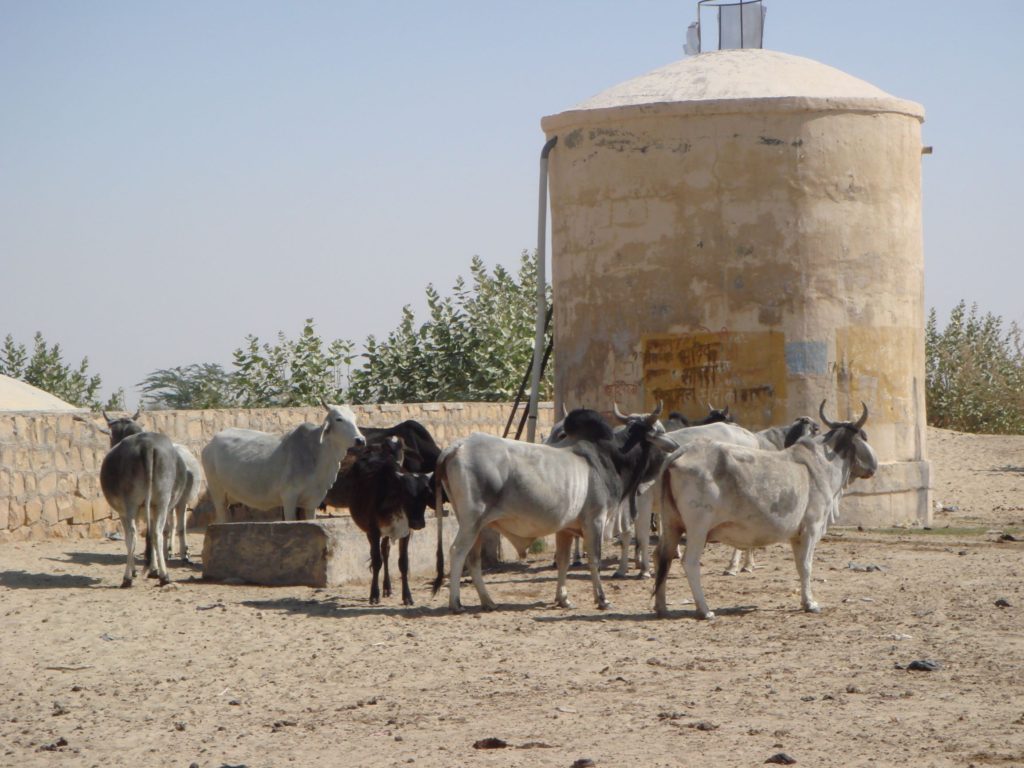
Nearby, a concrete water storage tank stands tall. His wife and other women in the village are pleased that they no longer have to trudge miles in the hot sun to fetch drinking water or fuel wood. For centuries, the women folk in the dhanis, tucked away from the road, bore the brunt of water scarcity. Now potable water can be drawn from the storage tank which is within a few km radius of most homes.
The water storage tank was built under the Mahatma Gandhi National Rural Employment Guarantee Act (NREGA) scheme, which assures 100 days of work. Under the scheme, local people have been employed to construct small and large earthen dams; Dhora (a water course for carrying water to the fields); Khadeen (an ingenious construction designed to harvest surface runoff water for agriculture); and keeping Khala (water channels) clear of sand during summer.
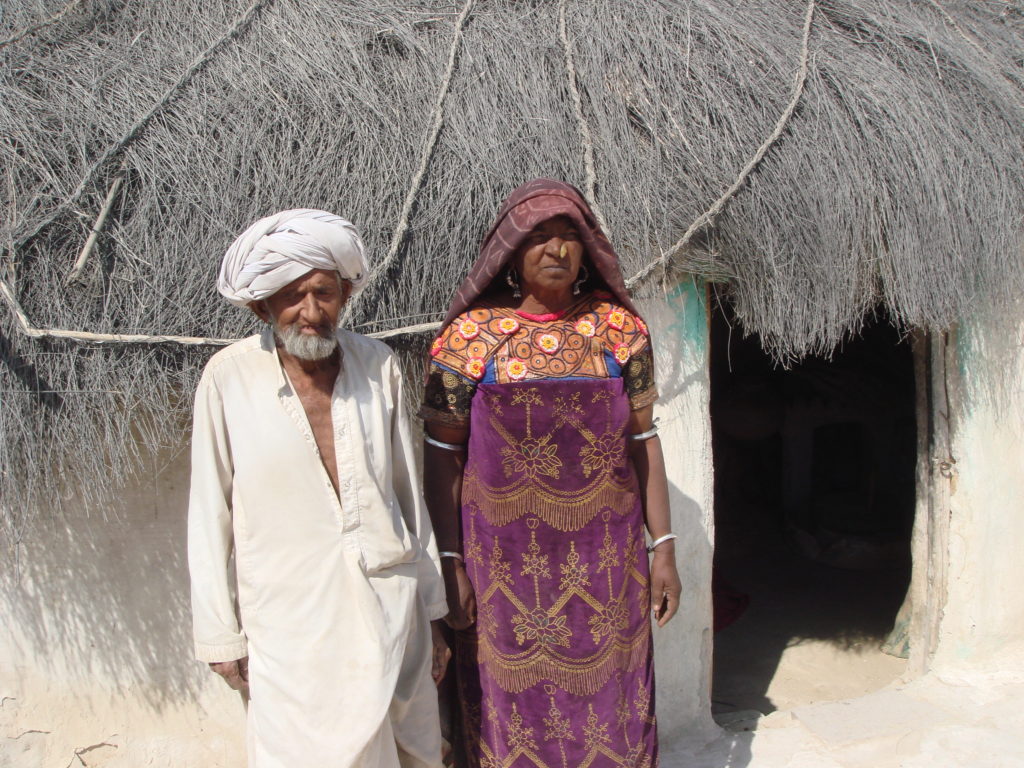
On the other side in Hadda Village, about 30 km from Jaislamer, Sabu Ram Panwar, 80, and his wife, Surma Devi, 70, own 20 bigha land and are dependent on rain for a good harvest. The canal water doesn’t reach their village so they grow wheat when there is good rainfall otherwise (bajra) millet.
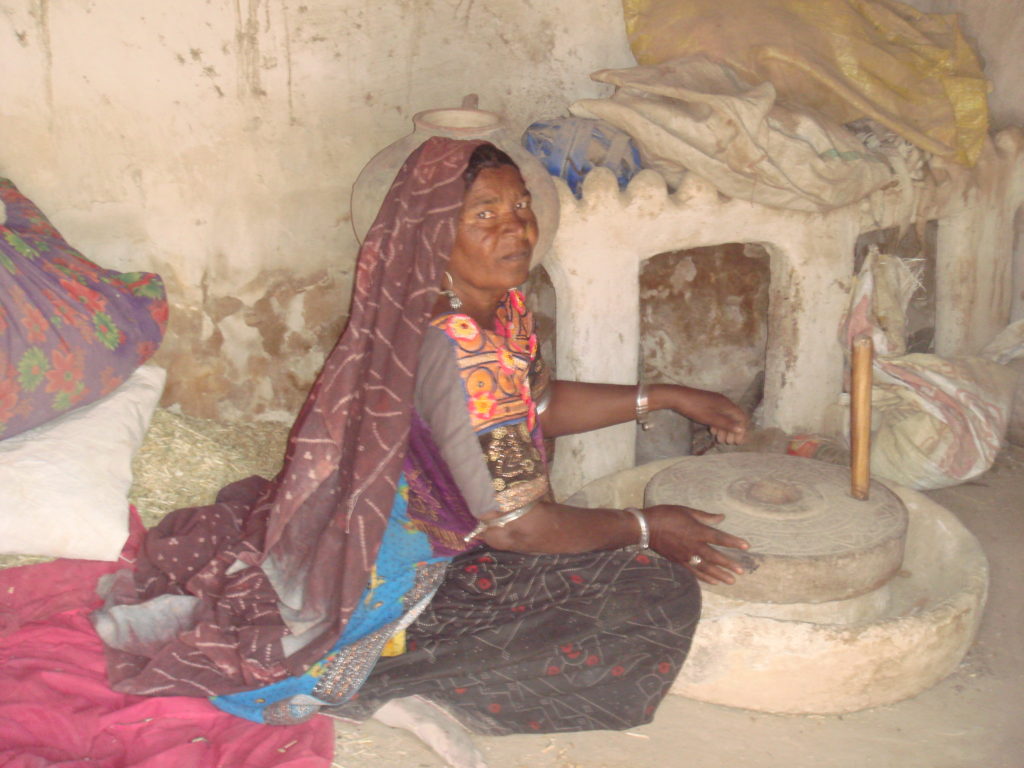
However, some villagers like Ishwar Ram, 60, have constructed Khadeen, which has helped conserve rainwater on his farmland, thereby boosting crop production. He says, “In the past year, I have had a surplus of Rs 26,000 worth of wheat in addition to wheat consumed at home by our family of eight members”.
Water harvesting practices have further improved local production and instead of an uncertain single crop, the terrain has begun yielding even two crops a year, adding to the coffers of these once impoverished communities.
“When agricultural productivity increases, per capita consumption of food increases too and this in turn improves nutrition in the rural folk”, says Mr Tanmay Kumar, NREGA Commisioner, Rajasthan.
The Indira Gandhi Canal, formerly known as the Rajasthan canal, brings the waters of the Sutlej and Beas to the Thar desert, traversing through seven districts of Rajasthan: Jaisalmer, Barmer, Bikaner, Jodhpur, Churu, Hanumangarh, and Shri Ganganagar.
© Copyright Neena Bhandari. All rights reserved. Republication, copying or using information from neenabhandari.com content is expressly prohibited without the permission of the writer and the media outlet syndicating or publishing the article.

